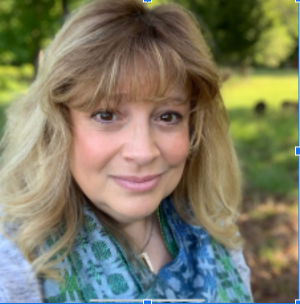Dates: February 14, 21, 28, 2026 noon to 4 p.m.
Fee: $180 per student – workshop fee includes workshop monograph
Registration: opens November 1 and closes December 1, 2025



Workshop Description:
show moreFeb 14
Day 1 participants will use a variety of methods to test dyes on fabric and yarn samples. A variety of fiber reactive dyes can be explored by participants to test for dye intensity and splits. Natalie will demonstrate and use a low water immersion method for yarn and fabric samples (plant-based: cotton, tencel) using three dye colors. Participants will use small fabric or yarn samples and test in solo cups or plastic bags (paper towels). Natalie will demonstrate examples of warps/skeins and fabric in quart-sized containers and participants will be able to further explore low water immersion and ice methods to learn how to create solid and multi-color effects on yarn and fabric.
All dyes will be mixed and tested on day 1.
Feb 21
Day 2 uses 3-4 dyes from Day 1 and various methods of ice dyeing to create a coordinating warp yarn. Natalie demonstrate ice-dyeing methods using warp yarn in the bottom of the tub as well as dye application process. Participants will work to create their dye station set-up and dye warp yarn using a tub. Focus will be on dyeing warp yarns in the bottom of a tub and discussing the differences that can result on yarn when using dyes that are designed to split. Opportunities to use leftover “muck” will be shared with participants to dye additional yarn.
Feb 28
show lessDay 3 The workshop begins with PowerPoint and discussion on setting up a gravity ice dye station using a deep tub/basin/sink and a rack to fit over your basin. Different scenarios will be shown to demonstrate how to achieve beautiful color using four or 5 different dyes. Following lecture, discussion, demonstration, participants will set up to ice dye *60-75 end 4.5 yard of pre-wound rayon/Tencel and/or cotton warp(s) using fiber reactive dyes/soda ash with guided support. The warp yarn is dependent on the weight of fiber used as well as the type of rack participants use.
Preparation and Supply List:
https://michiganleagueofhandweavers.regfox.com/ice-dyeing-cellulose-yarns
Natalie Drummond is an educator and fiber artisan living in Fremont, Indiana. Born and raised in Virginia, she developed a love of science, teaching, and fiber.

Her earlier work focused on sewing (Singer Sewing Machine Manager 1992) and needlefelting. She later learned to weave from a Fort Wayne Weaver’s Guild instructor. Her Fine Arts instruction in Craftmanship and Design coursework followed in 2015 from Purdue University.
Natalie has pursued weaving, color, and ice dyeing with a passion. Natalie was awarded a MAFA Fellowship in 2019 and has been studying Deflected Doubleweave intensively including how to use in Woven Shibori.
Her work can be found daily at the Orchard Gallery of Fine Arts in Fort Wayne and she was the featured artist in 2019, 2021, and 2024.
Instagram NatalieWoven
Facebook NatalieWoven
Business Website: www.Nataliewoven.com
Published Articles and Weaving:
Handwoven Magazine Nov Dec 2021 “Cool Breeze” Deflected Doubleweave
Handwoven Magazine Winter 2024 “Ikat and Ice”
Weft Magazine Summer 2025 “PrimaVerde” 4 Shaft Deflected Doubleweave
show less